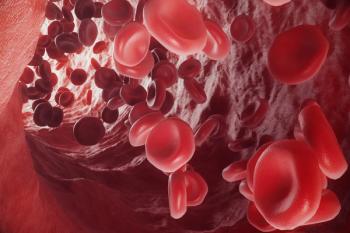
Investigational Treatment Approach Effective, Safe and Inexpensive in a Type of Prostate Cancer, Says Expert
Thus far, findings from 2 trials show that treatment with bipolar androgen therapy is associated with several benefits in patients with castration-resistant prostate cancer, according to an expert from Sidney Kimmel Comprehensive Cancer Center.
While study findings have shown that the use of bipolar androgen therapy (BAT)—the rapid cycling between extremely high and low levels of testosterone during a treatment cycle—
Moreover, recent findings indicate that the treatment approach is less expensive than other treatment options, Laura Anne Sena, MD, PhD, a medical oncologist at Sidney Kimmel Comprehensive Cancer Center at Johns Hopkins University, said in an interview with CancerNetwork®.
During the
Notably, the RESTORE trial assessed BAT in multiple cohorts of patients with metastatic CRPC who progressed on enzalutamide while the TRANSFORMER trial assessed patients who progressed on abiraterone.
Transcript:
There are 2 main trials [assessing] BAT. One is called RESTORE, and the other is called TRANSFORMER. The RESTORE trial was a single arm trial of BAT for patients with [CRPC] that were divided into multiple cohorts depending on prior therapies. TRANSFORMER was a randomized controlled trial for patients with metastatic CRPC who has progressed on abiraterone. Patients were randomized to receive either BAT or enzalutamide.
From these trials, we've learned a lot about potential use for BAT for patients and the first thing is that among the patient studies, is that it has an acceptable safety profile. One thing to note is that patients with pain from prostate cancer were excluded from these trials, so we don't have data to know about safety or efficacy for patients with symptomatic prostate cancer, but for patients with asymptomatic metastatic castrate-resistant prostate cancer, BAT has an acceptable safety profile.
The second thing we've learned is that BAT can induce objective responses. Across these trials, the objective response rate is about 30% and the median progression free survival is about 6 months; it's pretty consistent across the trials. Beyond the ability for BAT to serve as a monotherapy, we saw that patients who were treated with BAT, and then subsequently went on to receive an AR inhibitor seem to have better than expected responses to AR inhibition. We think that BAT can increase the depth and durability of AR inhibition and sensitize the disease to subsequent therapy. There are 2 other things to note about BAT: one is that it can improve quality of life, particularly sexual function for patients and the other is that it's very inexpensive, particularly in comparison to our other options. It's really a small fraction of the price. We think this is important when thinking about the financial toxicities of cancer care for our patients.
Reference
Sena LA. Bipolar Androgen Therapy in Advanced Prostate Cancer. Presented at 2022 Society of Urologic Oncology (SUO) Annual Meeting; November 30-December2, 2022; San Diego, California.
Newsletter
Stay up to date on recent advances in the multidisciplinary approach to cancer.

















































































